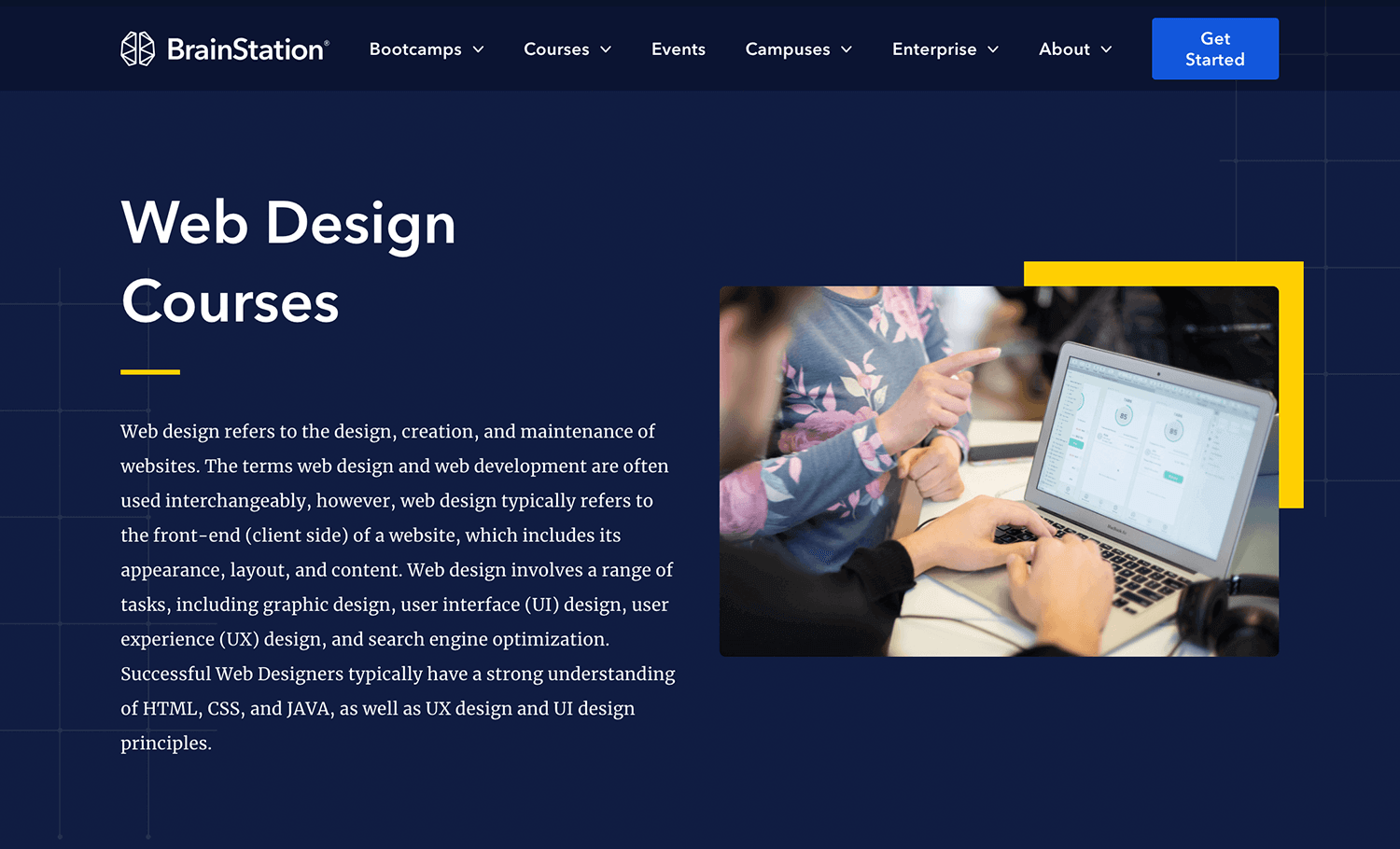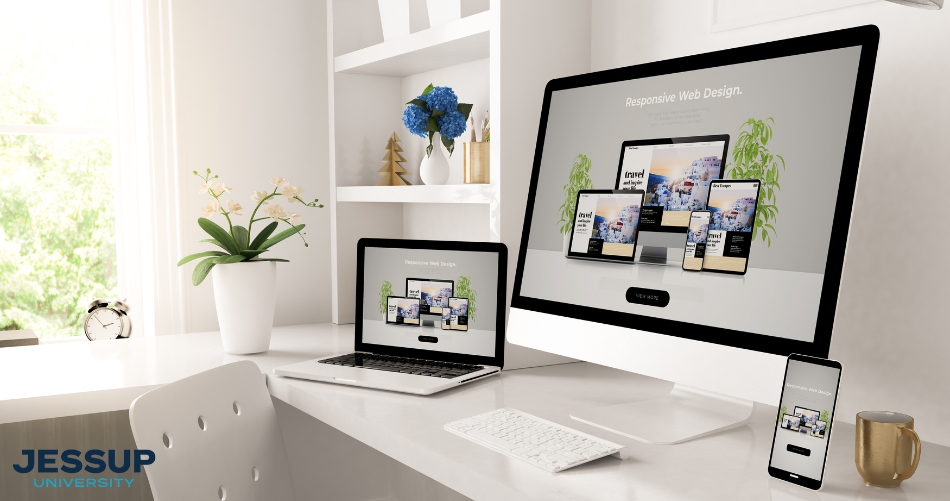Website design factors that guarantee accessibility and readability
Discovering the Different Kinds of Website Design and Their One-of-a-kind Advantages
The landscape of Web layout incorporates a selection of designs, each offering unique advantages that deal with various user demands. Level and minimal designs emphasize clearness, while receptive and material styles improve flexibility throughout tools. Typography-driven and illustrative techniques aim to increase involvement and psychological resonance. Understanding these diverse kinds can substantially affect individual experience and brand assumption. What lies under the surface of these layout options?
Minimalist Web Layout

Minimal Web design frequently integrates a minimal color combination and straightforward typography, which not just boosts visual appeals however likewise enhances brand identification. The lowered complexity can result in quicker loading times, even more improving user satisfaction. In addition, by minimizing aesthetic mess, users can involve with web content better, leading to boosted comprehension and retention. Generally, minimalist website design promotes a seamless user experience, making it a popular option for brands aiming to share quality and expertise in their on the internet visibility.
Responsive Website Design
Responsive Web style has actually become essential in today's digital landscape, guaranteeing mobile compatibility for customers throughout different devices. This method substantially enhances user experience by providing smooth navigating and availability, no matter display size. As even more individuals access the Web on mobile phones and tablet computers, the relevance of responsive layout remains to grow.

Mobile Compatibility Value
As smart phone usage continues to increase, guaranteeing internet sites are compatible with different display sizes has actually become vital for reliable interaction and interaction. Mobile compatibility, typically achieved through responsive website design, allows websites to adjust flawlessly to mobile phones, tablets, and various other devices. This versatility not only gets to a wider target market yet additionally improves brand credibility. An internet site that works well on smart phones mirrors professionalism and trust and interest to individual demands. In enhancement, online search engine prioritize mobile-friendly sites in their rankings, making compatibility a crucial factor for online exposure. By spending in mobile compatibility, services can enhance their digital presence and deal with the growing number of users that access information on the go. Therefore, focusing on mobile-responsive design is vital in today's digital landscape.
Improved User Experience

Flat Design
Flat style is a minimal technique to Web design that emphasizes simpleness and clarity. By removing three-dimensional aspects such as darkness, structures, and gradients, flat design creates an aesthetically appealing user interface that focuses on web content and performance. This style advertises an intuitive navigation experience, as users can swiftly determine key attributes and activities without diversion.
Among the primary advantages of level style is its responsiveness throughout different gadgets and screen sizes. Its straightforward layouts and tidy lines adapt seamlessly, ensuring a constant experience for users on mobile, tablet, or desktop computer platforms. Furthermore, level design often integrates vibrant colors and typography, improving aesthetic impact and brand recognition.
Additionally, the simpleness fundamental in flat layout leads to quicker filling times, which contributes positively to individual satisfaction - web design. On the whole, flat style stays a preferred choice for modern Web development, aligning with contemporary aesthetic preferences while providing excellent functionality
Material Layout
Product Design stands for a design language developed by Google that concentrates on creating a intuitive and cohesive individual experience throughout electronic systems. This approach emphasizes making use of grid-based formats, responsive computer animations, and deepness results such as lighting and shadows, which aid to develop a feeling of power structure and spatial relationships. By her comment is here imitating the physical globe, Material Design allows individuals to connect with digital user interfaces in an extra natural and engaging fashion.
Among the key benefits of Material Design is its flexibility across different gadgets and screen dimensions, ensuring a consistent experience for customers. Furthermore, it promotes a clear aesthetic language that boosts use, making it simpler for individuals to navigate complicated applications. The consolidation of dynamic shades and vibrant typography also plays an important function in attracting interest to crucial elements, thereby enhancing overall customer involvement - website design. Product Design has actually ended up being a popular option among designers seeking to create practical and visually enticing internet sites.
Typography-Driven Design
Typography-Driven Layout concentrates on the critical usage of kind to boost the visual and functional aspects of a web site. This style technique focuses on typefaces, font dimensions, spacing, and pecking order to produce aesthetic interest and overview individual experience. By thoroughly selecting typography, developers can share brand identity and stimulate emotions, making the material much more easily accessible and appealing.
Reliable typography improves readability and usability, guaranteeing that users can conveniently soak up and navigate the website information. The appropriate mix of type can also develop a clear aesthetic hierarchy, permitting individuals to promptly identify vital messages and phones call to action.
Additionally, a typography-driven technique can be adapted to different tools, making certain consistency throughout platforms. This flexibility is important in today's multi-device landscape, where customer experience is extremely important. Ultimately, Typography-Driven Style serves not only as a creative selection but likewise as a useful element that considerably impacts a website's efficiency.
Illustratory Web Layout
Illustrative website design employs visual storytelling methods that can substantially boost individual interaction. By incorporating special illustrations, sites can develop an unforgettable brand name identification that resonates with their audience. This strategy not only captivates visitors yet additionally connects messages in a visually engaging way.
Aesthetic Storytelling Techniques
A plethora of Web developers use visual narration methods to create engaging and immersive customer experiences. This strategy combines images, layout, and typography to tell a tale that reverberates with users on a psychological level. By incorporating engaging visuals, designers can successfully convey messages and evoke feelings, directing site visitors with a brand's journey. Infographics, computer animations, and interactive elements offer to boost stories, making complex information much more obtainable and unforgettable. In addition, aesthetic narration can establish a natural brand identification, as regular imagery and motifs reinforce core worths and messages. Inevitably, this method not only astounds users but additionally promotes a deeper connection with the material, motivating exploration and retention. With skilled application, aesthetic storytelling changes basic Web experiences right into meaningful and vibrant interactions.
Enhancing Customer Interaction
Efficient website design significantly boosts customer involvement by leveraging illustratory elements that attract focus and foster communication. Images can streamline complex ideas, making them extra approachable and memorable for users. They damage the monotony of text-heavy web pages, creating visual breaks that invite exploration. visite site Additionally, unique images can stimulate emotions, motivating customers to attach with the content on a deeper level. Interactive components, such as animations or hover effects, can likewise boost engagement by inviting individuals to get involved actively as opposed to passively eating details. This technique not only keeps site visitors on the site much longer but also enhances the probability of return visits. Ultimately, effective illustratory website design transforms the customer experience, making it more enjoyable and impactful.
Branding Through Image
Aesthetic aspects play a considerable duty in shaping a brand's identification, and pictures are a powerful tool in this regard. Illustratory website design allows brand names to convey their distinct character and worths via personalized art work. This approach cultivates a much deeper emotional link with the audience, improving memorability and engagement. By incorporating pictures, brand names can distinguish themselves in a crowded industry, developing an unique visual narrative that resonates with their target market. Furthermore, images can make and streamline complex concepts web content extra accessible, efficiently interacting messages in an appealing way. On the whole, branding via picture not just enriches the individual experience yet also strengthens brand name acknowledgment, making it a valuable method for organizations aiming to develop a strong on check over here the internet visibility.
Frequently Asked Concerns
How Do I Choose the Right Website Design Type for My Company?
To choose the right website design type for a business, one ought to examine objectives, target audience, and market requirements. Evaluating individual experience and capability will certainly direct the choice procedure for optimal interaction and efficiency.
What Equipment Are Finest for Producing Different Website Design Styles?
Popular devices for producing varied website design styles include Adobe XD, Figma, Sketch, and WordPress. Each deals one-of-a-kind attributes tailored to different design demands, making it possible for developers to develop practical and visually enticing web sites effectively.
How Much Does Professional Web Layout Typically Price?
Expert website design commonly sets you back between $2,000 and $10,000, depending on intricacy, features, and developer experience. Personalized options and ongoing upkeep may increase expenditures, while layouts can provide even more affordable choices for easier projects.
Can I Integrate Multiple Website Design Types Successfully?
Yes, combining several Web layout types can be efficient. By incorporating elements from numerous designs, designers can produce one-of-a-kind, appealing customer experiences that accommodate diverse target markets while improving performance and visual charm.
Just How Do Design Trends Impact Individual Experience and Engagement?
Style fads considerably influence user experience and engagement by improving visual charm, improving navigating, and fostering psychological links - web development. Staying upgraded with trends permits designers to produce user-friendly user interfaces that reverberate with users and motivate long term communications
Minimal and flat designs emphasize clearness, while receptive and material styles boost versatility across devices. It may appear counterintuitive, minimalist Web design emphasizes simpleness to improve individual experience. Responsive Web layout plays a crucial duty in boosting individual experience by ensuring that an internet site adapts flawlessly to various screen sizes and tools. Flat design is a minimalist approach to Web design that stresses simpleness and clearness. Product Style stands for a style language developed by Google that focuses on developing a cohesive and user-friendly customer experience throughout digital platforms.